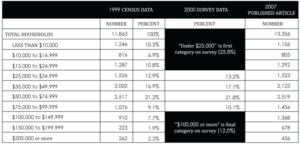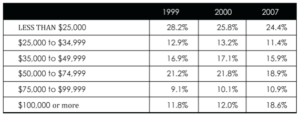Secondary Research: Know How to Use Existing Information to Conduct a New Study
28/11/2019
Research, aiming to discover solutions to issues/problems in a specific field, includes two major categories: primary and secondary research. While primary research involves data collection via self-conducted approaches, secondary research includes data collected from previous studies.
Primary research is valuable as it fills a gap in the information and provides specific answers to the chosen research question. However, due to its nature, cost involved, and time consumed to perform the study, primary research is not commonly used by the researchers. Instead, they opt secondary research method.
Secondary research ( desk research), involving the use of existing data, summarizes & collates the data to improve the effectiveness of the research. This type of research includes sources published in research reports or other similar documents. The sources for data in secondary research are internal secondary data (websites, public libraries, existing surveys) and external secondary data (government statistics, non-government agencies, media sources).
The purpose of secondary research include:
- Easy clarification of research question
- Ruling out of irrelevant research proposal
- Aligns the objective of the primary research
How to perform secondary research?
Secondary research is easier to perform and includes minimum time-consumption & cost. The steps involved in this process are as mentioned below.
- Identifying the topic of interest – Prior to beginning with the secondary research, identify and define your topic of interest. Next, prepare a list of attributes, purposes and questions that need to be answered at the end of the study. This will help you narrow down the broad topic and determine the key focus of the topic.
- Determining the research sources – After identifying the topic of interest, the next step is to look for sources of relevant & applicable information. In secondary research, information is mostly collected from published and unpublished sources.
Published sources include:
- Journals, periodicals and magazines
- Publication of foreign governments
- Publications and reports of financial institutions, chambers of commerce, trade associations, etc.)
- Census reports and statistical abstracts
- Reports published by state and central government
- Periodic publications of government bodies such as the National Sample Survey Organization (NSSO)
- Reports published by bureaus, economists, research scholars, etc.
Unpublished sources include:
- Reports of business and private sectors
- Data from information sources organizations ( Passport GMID )
- Statistics maintained by corporations, state and central government
- Collecting existing data – On identifying the data sources, narrow them down to gather data that is closely related to your study. For instance, if you want to find the trends in education, then search for suitable data (in the above-mentioned list of sources) using keywords such as trends, education and their synonyms. By doing so, you can collect valuable data and also ensure that none of the vital data is missed out. Also, to ensure that you have collected only the necessary data, consider questions such as: what is the research goal? which questions are outstanding? how precise is the information? and how up-to-date is the collected data?.
- Normalizing data – If the study includes complex and huge data sets, then normalizing the data can ease the process of data analysis. Normalization is the process of comparing the data collected from different sources. For example, information regarding household income is collected from three different sources: US Census Bureau Data (1997), a survey (2000) and a published article (2007). These data can be normalized by shrinking the data into 6 income categories and converting the populations into a percentage.
Normalized data
- Data analysis – Perform the data analysis and determine if any questions are left unanswered. Remember, the analysis technique selected must be capable of producing actionable results. If there is any information gap, repeat the analysis process until you come up with future actions.
What are the advantages of secondary research?
Secondary research includes several advantages over primary research. These include:
- The information is readily available, thereby saving time & cost spent on data collection
- Internal secondary data utilized breakdowns and categories that reflect the way of structuring the data
- Clarifies the research focus
- Presents difficulties faced while conducting the primary research
When should you consider using this form of research?
Secondary research is useful when you want to obtain feedback, clarify primary research objectives or there is no/little budget. However, it is not suitable if situations such as the information available is out-of-date, and it is challenging to evaluate the validity & reliability of the information.
Key takeaways-
1.Verify the credibility of the information gathered
2.Do not just summarize the data. Instead, compare & analyze the information and ensure they are value-adding


